If you ask me what European country you should put on your to-do-list, one of my answers would be Cyprus.
Because in Cyprus you will get the full package : good food, enjoyable climate, amazing landscape, nice people and an enriching cultural heritage.
NICOSIA – the divided capital
For many years, Cyprus was the protagonist of an enduring conflict between Christian Orthodox Greek and Muslim Turkish communities, giving Nicosia the unenviable distinction of being the world’s last divided capital. The scars of the past conflict are still brutally evident nowadays, especially if you wander around the border, mostly known as the green line.
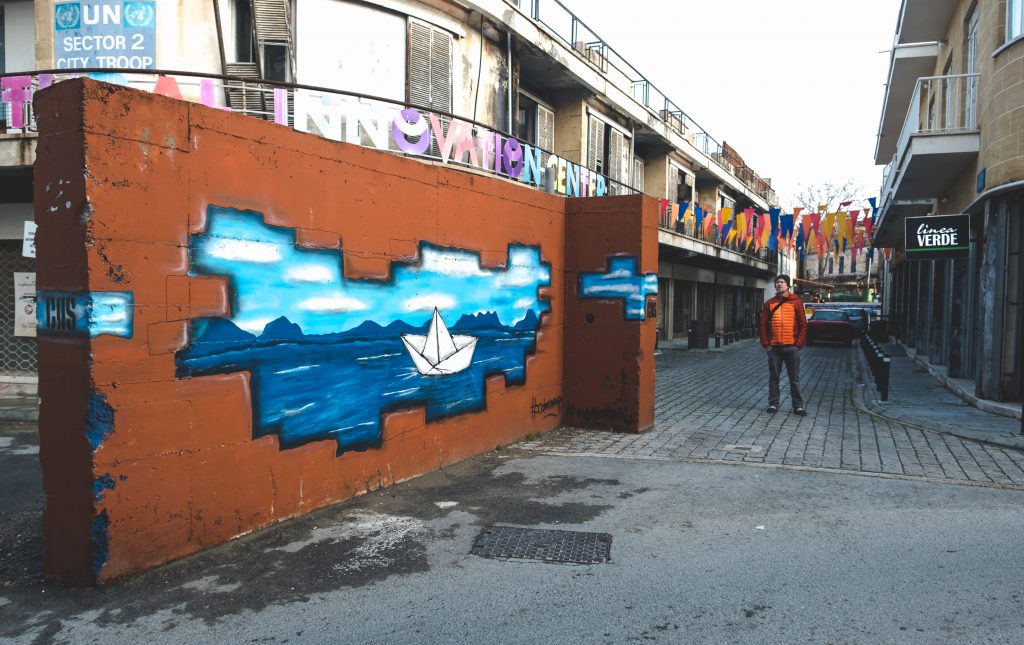
They come in the form of a UN-patrolled buffer zone, a wound that runs east to west across the city, and in the dereliction that surrounds it. Roads end at barrels and barbed wire or sandbags; buildings stand bullet-pocked and empty, gun ports and sentry posts slowly decay.
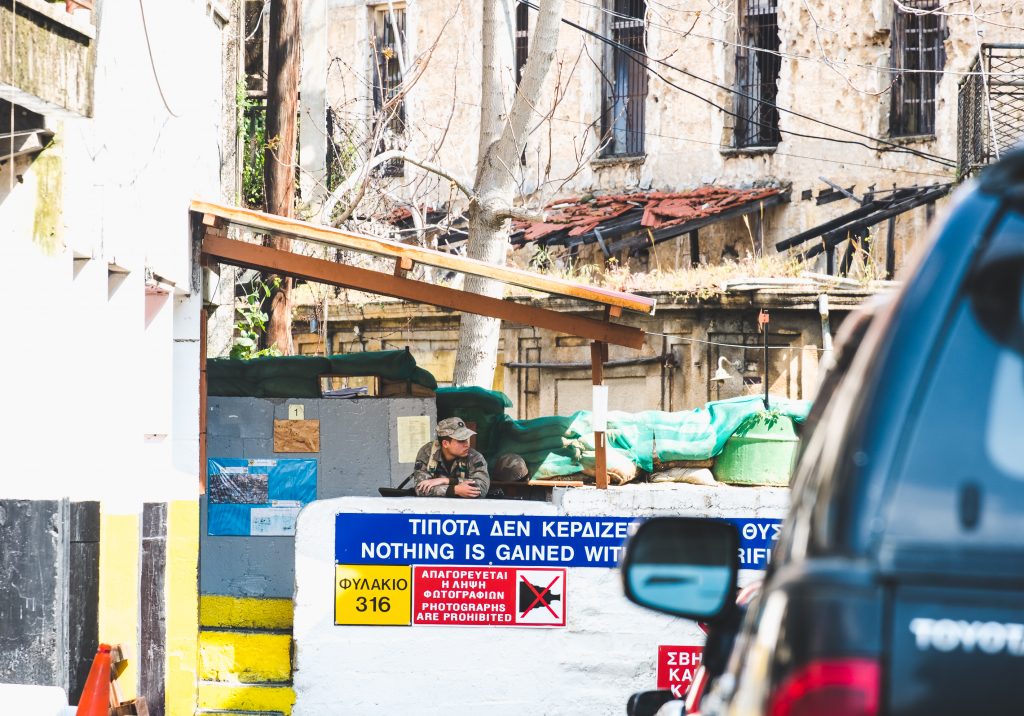
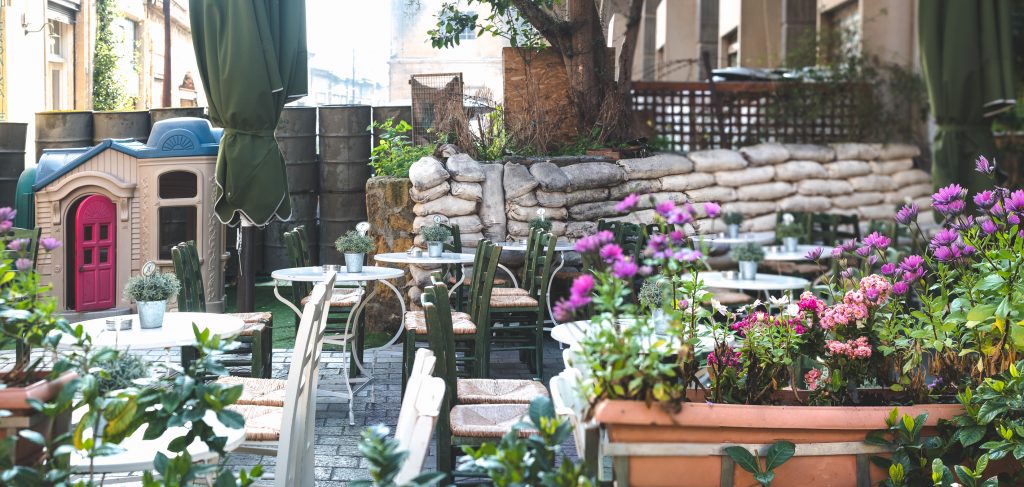
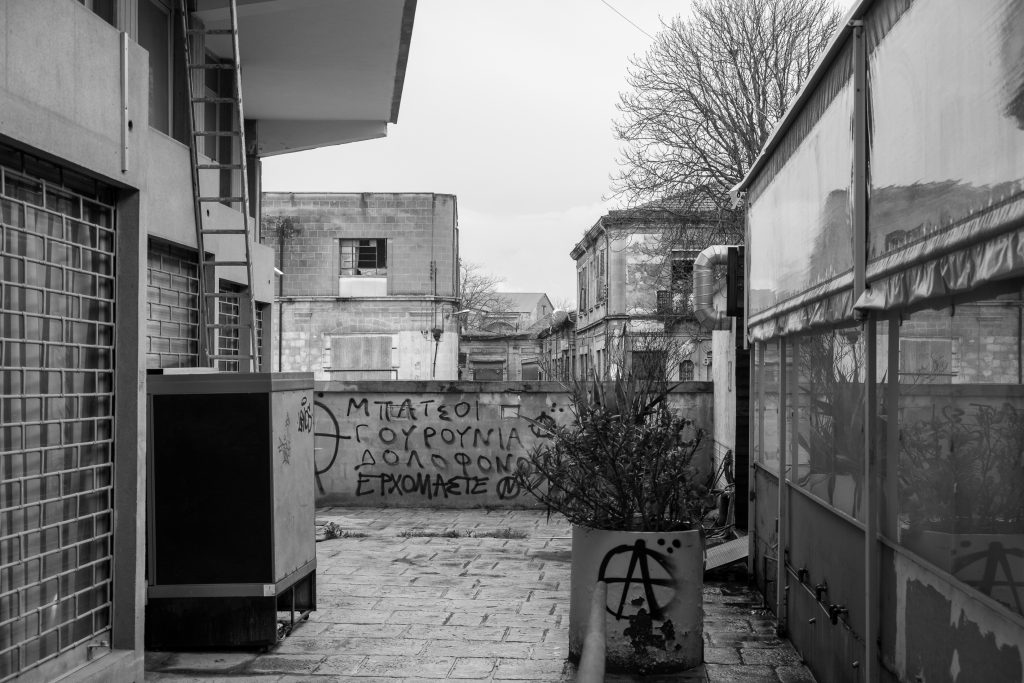
Nicosia is today a safe and non-problematic city and you can even cross the pedestrian border easily (though most european citizens need to show their passport at the border when entering Turkish domain and it should be valid for at least 6 months). It is striking to see the differences on both sides of the barricade, a clear demarcation of who dominates each area; among some the former Catholic church (St. Sophia Cathedral) turned into a Mosque, Bazaars, an even Erdogan painting for sale opposed to typical greek pastries, restaurants offering Meze food and greek flags hanging around.
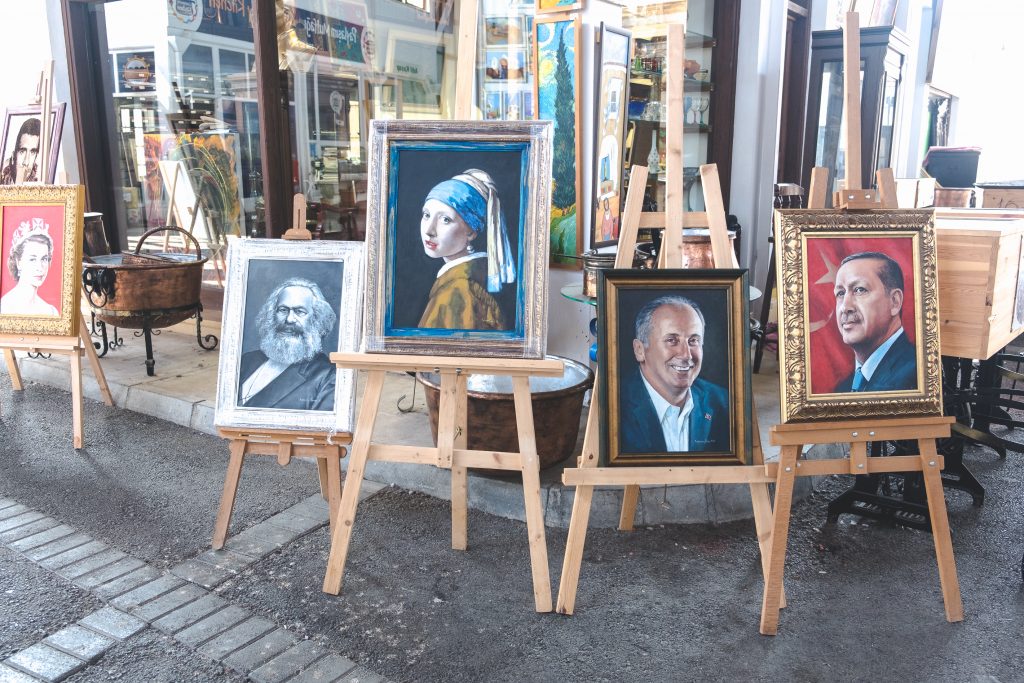
But let´s move on. Cyprus has much, much more to offer.
The natural landscape
Rent a car if you want to discover the natural beauty of the coastline and the countryside of the island. Then put on your hiking shoes and go exploring the trails. In one week we were able to see different sceneries, from sun-warmed cliffs, white-sand beaches, canyons, waterfalls, snow mountains, flowering fields and old castles hanging on rocky cliffs
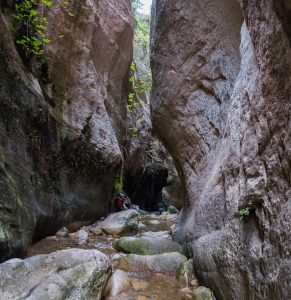
One of the most worth-doing and adventurous hikes is in Avakas Gorge. Due to the formations of the rocks and by being too narrow at some point, the gorge is considered as a difficult hike. In addition there are slippery places and a certain amount of clambering over stones and rocks is required, as well as good water-proof hiking shoes if you don’t want to get wet. We had luck because spring is one of the best time of the year to do it. In the winter months is not recommended as the stream becomes a torrent and the water levels become too deep, in summer it can get too hot. Nevertheless one should take care of falling rocks all year-round !!
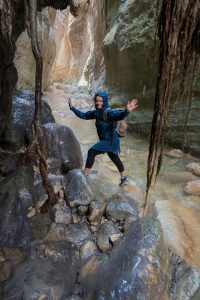
Another highlight of this trip was the hike to Cape Aspro in the south of Cyprus as it was not so touristic and the views from the white, chalky cliffs rising above the beach are undoubtedly one of the most spectacular places in the region. The contrast of the blue turquoise and white creates a dreamy setting. The trail starts in Pissouri bay and continues for more 4,5km until you reach an almost isolated beach where you can swim.
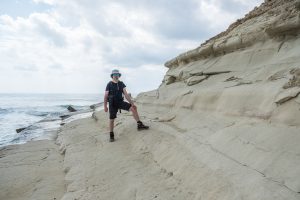
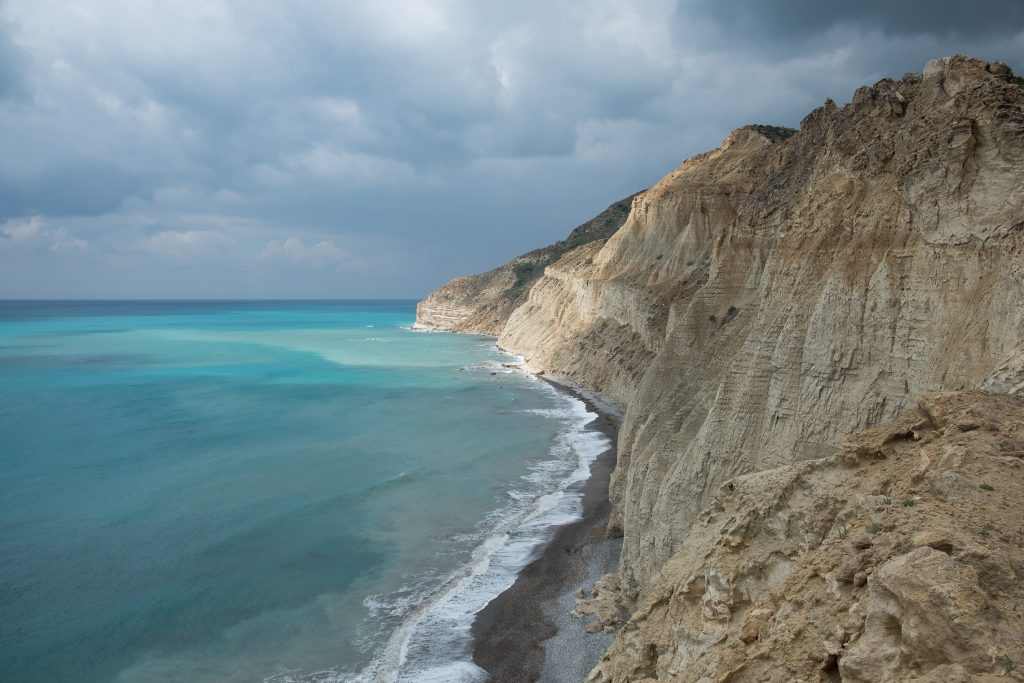
If you decide to visit Cyprus in spring, don’t miss the Aphrodrite Trail in the northwest part of the Republic of Cyprus as you will be acquainted with the varied flora of the region and the meadows are covered in a carpet of yellow chrysanthemum blossom with constant views of the blue lagoons. Few minutes after the starting point you will arrive at the Baths of Aphrodite, the legendary bathing place of the goddess of love. The dim and distant past Aphrodite is supposed to have frolid with Akamas and Adonis in the pool that is fed by a spring. Today a huge fig tree shades this romantic spot.
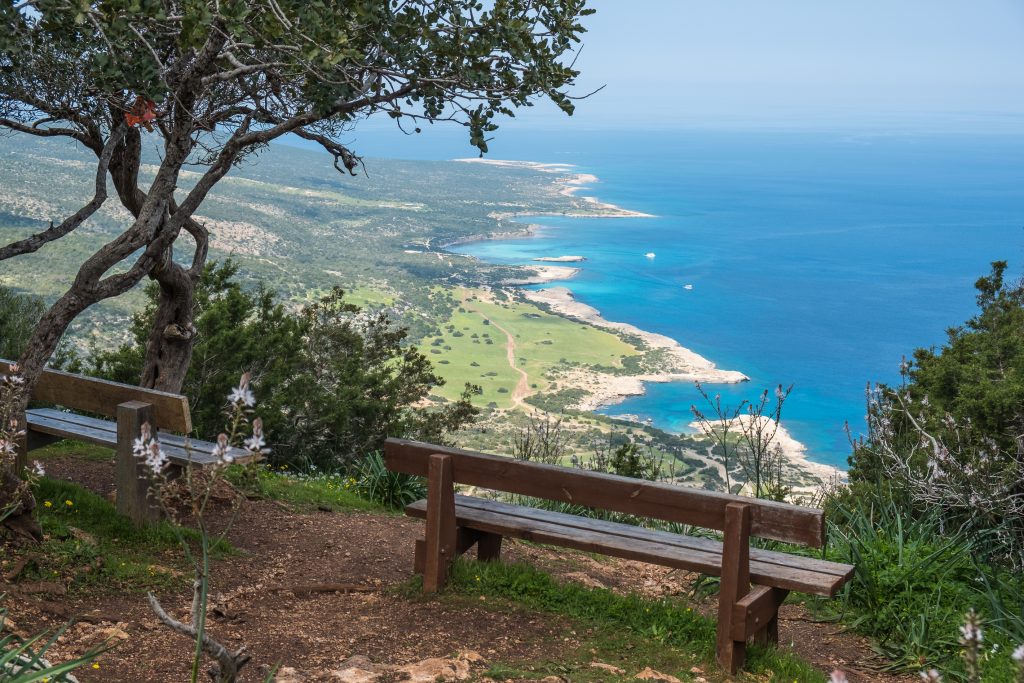
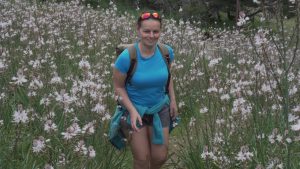
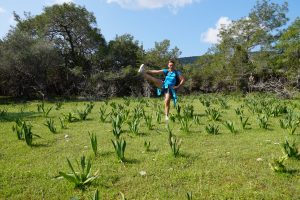
Cyprus also has mountains and one of the highest points is the Mount Olympus (1952m) in the Troodos Mountains where you can even ski in winter. The Troodos region is a very beautiful and enriching area, nestling in its valleys and mountains picturesque villages, Byzantine monasteries and the UNESCO World Heritage recognised Painted Churches. The area has been known since antiquity for its mines, which for centuries supplied copper to the entire Mediterranean. In the Byzantine period it became a centre of Byzantine art, as churches and monasteries were built in the mountains, away from the threatened coastline. The architecture of these churches is unique, confined to the Troodos range and almost certainly of indigenous origin. The rural architectural style from these small churches is in stark contrast to their richly decorated interior murals.
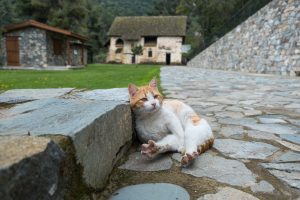
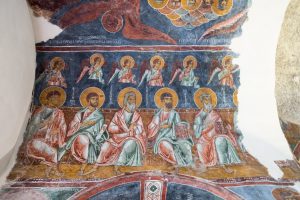
Then we crossed the border to North of Cyprus and although most of the landscape is still intact to the cultural differences, you cannot avoid the grotesque image of the TRNC (Turkish Republic of Nothern Cyprus) flag image drawn on the side of Beşparmaklar Mountain to symbolise the domain of the Turkish. The flag occupies an area of 6 football stadions!!
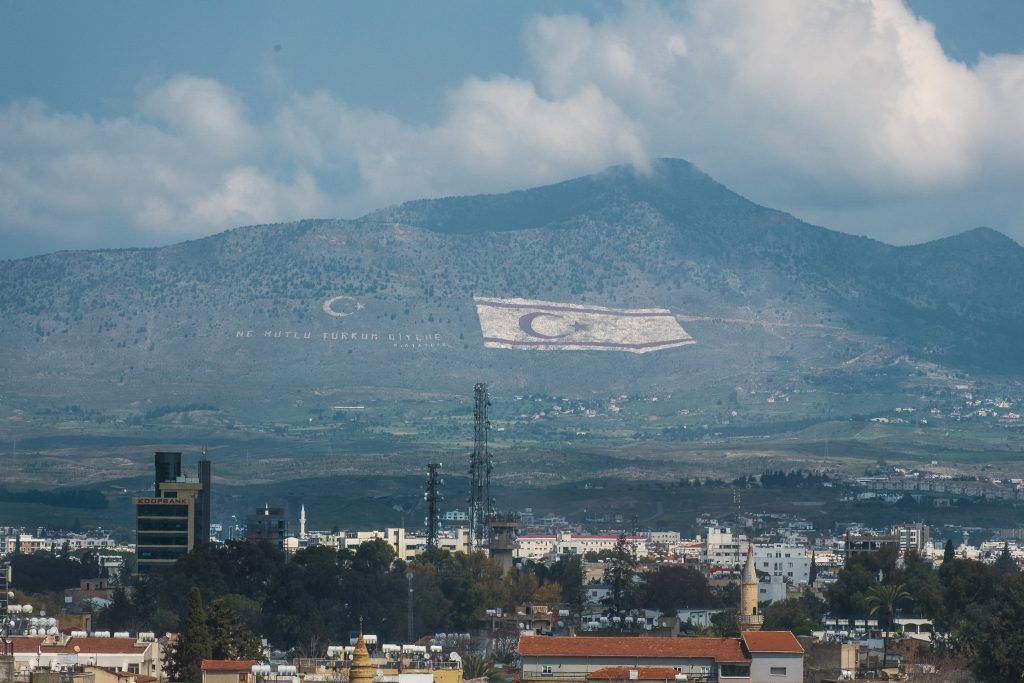
Apart from that, the North of Cyprus has presented us with some wow sites and sceneries worth to visit and to remember. One of them is the stunning St. Hilarion Castle on top of the steep rocky hill with a fascinating view over the city of Kyrenia. Saint Hilarion formed the defense of the island with the castles of Buffavento and Kantara against Arab pirates raiding the coast and provided its rulers with command of the pass road from Kyrenia to Nicosia.

In 1964 an underground Turkish nationalist group, took control of the castle, again for its strategic position. It has been in Turkish Cypriot hands ever since, with a sheltered Turkish military base located on the ridge below. You can drive your car until the castle entrance but it is totally forbidden to stop your car at the military station.
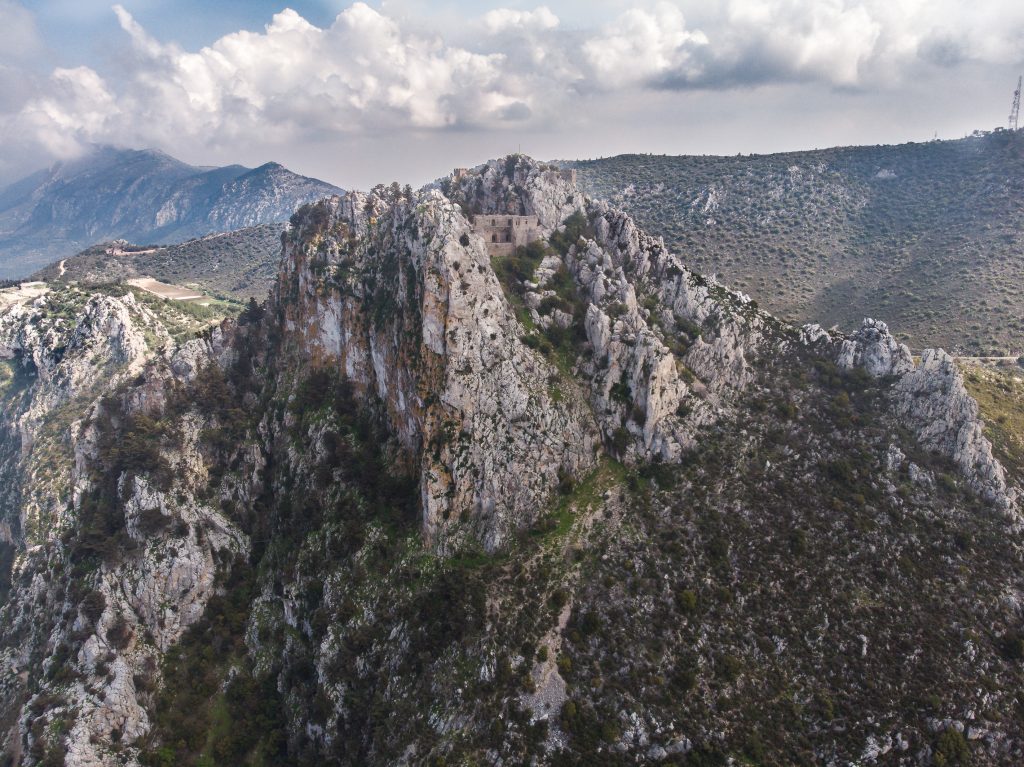
At the far end of the northeastern part there is an amazing Peninsula named Karpaz, a land almost unspoilt by the savage hand of modern development, where Mother Nature still holds the reins of power; where donkeys, trees, flowers, and cereal crops dot the landscape as far as the eye can see. As we didn’t have much time, we only walked along the Golden Beach, one of the pearls of the country. Formerly a military base and closed to the public, the Golden Beach and its dunes is now visitable and a place you should put on your list.
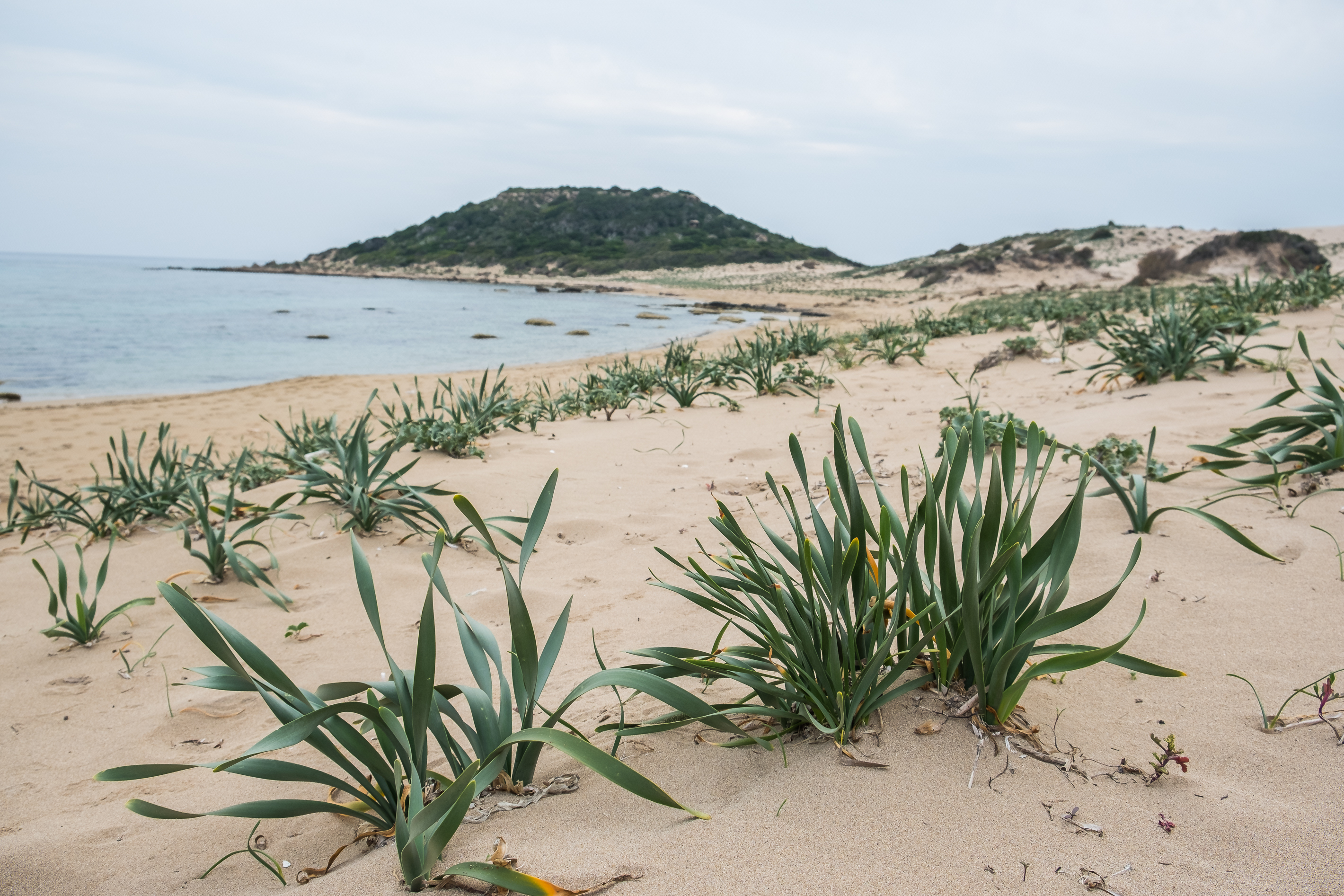
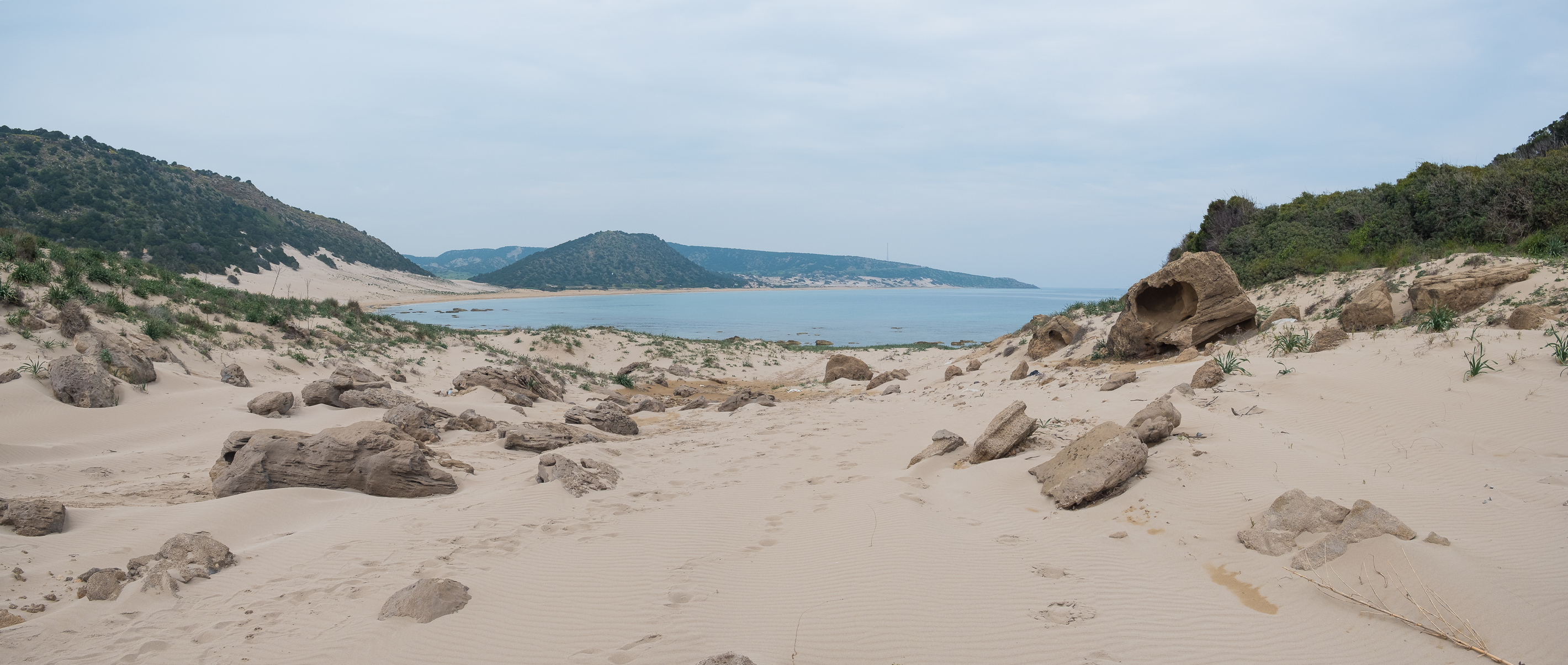
The food
There are a few key factors that perfectly highlight the food culture of Cyprus, firstly, we have the sheer range of various culinary influences, secondly, the food is amongst the freshest available – often utilising locally sourced ingredients – and lastly, the Cypriot people absolutely love their food.
The cuisine of North Cyprus is very similar to that of the south. This is due to the fact that the country had a shared history before the Turkish invasion of 1974. The main effect on Cypriot cuisine after the invasion was the removal of western food chains, which were replaced by an influx of Turkish influenced restaurants throughout the island. We have realised this fact when crossing the border to the Turkish part in Nicosia.
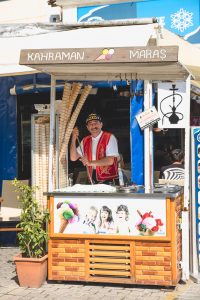
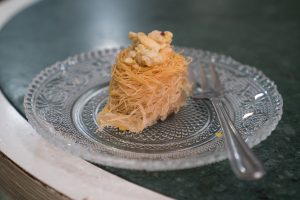
Cyprian people love their food, but more importantly, they love the social aspect that comes from sharing and being together. It is the norm that large families eat together on the weekends, hence the popularity of meze style dishes that are comprised of many different items for everybody to share.
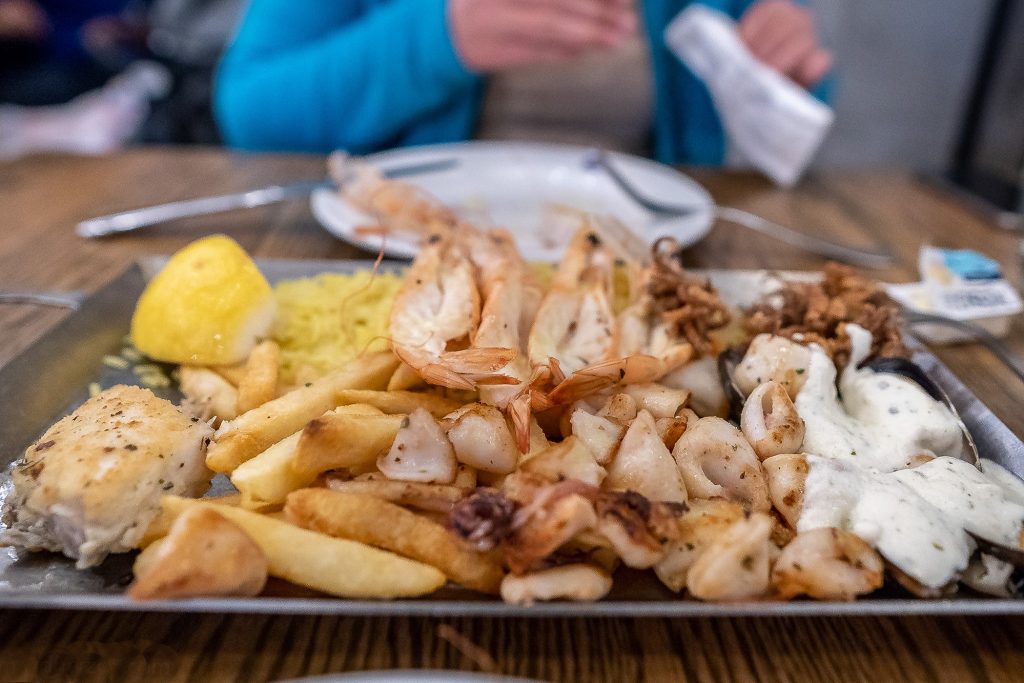
Cypriots generally prefer to have long lunches and late dinners, when temperatures have fallen to a more pleasant level. Restaurants will typically not open until 7pm, with most customers arriving from 8 or 9 onwards. We have experienced that ourselves when we wanted to dine in Pafós on a typical highly recommended place.
Traditional Cypriot foods include souvlakia (grilled meat kebabs), shaftalia (grilled sausage), afella (pork marinated in coriander), fried halloumi cheese, olives, pitta bread, kolokasi (root vegetables), lamb, artichokes, chickpeas and rabbit stews (stifado). The absolute best way to get acquainted with Cypriot food is to order a meze platter; this will likely include many of the foods above, and will come served with a variety of breads and dips.
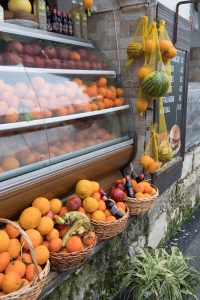
In general, Cypriots favour well-seasoned, but not spicy, food, and eat fruit (both dried and fresh) with lots of dishes. You’ll also find that fresh fruit is available everywhere from restaurants and cafés, to street stands and markets. The colourful palette can also be inviting to the eyes 🙂
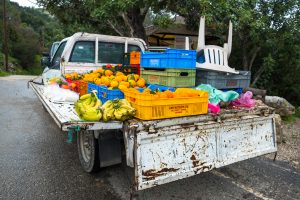
Τhe connection of the carob tree (known locally as teratsia) with Cyprus has its roots deep in history. In the etymological sense, Cyprus owes one of its oldest names to this humble tree. Its fruit was valuable for villagers since carobs at the time represented the main source of income for the rural population, and it was justifiably known as “black gold”.
Nowadays we can find carob syrup for sale in most supermarkets and convenient stores (also as a souvenir), as this product is very representative of the Cypriotic cuisine.
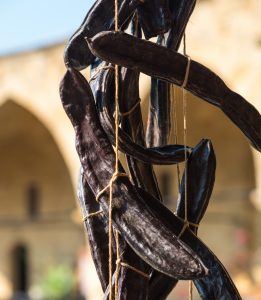
Of course we could not leave Cyprus without trying the famous Turkish-style coffee. The coffee is brewed in a coffeepot called Ibrik, in hot (not boiling) water – slowly heated up so that the flavor can fully develop. It is usually served with a glass of cold water to refresh the palate before drinking coffee again
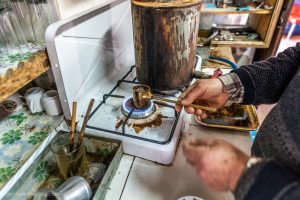

Paulo Almeida
Fascinating report! Now I’m even more interested in visiting the island. However and as I’m a great enthusiast of the mediterranean architecture I’d like to see a chapter dedicated to the beautiful houses there.
Patricia Martins
We haven´t spent much time in the cities, but according to what we saw, there are many resemblances to the Greek architecture due to their shared history. Nicosia is a single case, as many buildings are left abandoned or are badly maintained and due to the Turkish domain it is nowadays a mix of different architectural styles. One can find living side by side modern block apartments and typical cypriotic villages or western-food chains and bazaars, mosques and Catholic Orthodox churches. On the southeastern coast of Cyprus (Agya Napa) many modern houses and tourist resorts are being built like crazy, which is a sad reality. The best thing is to run away from these places if you still want to find the original flair. If you go to the mountains (Troodos Mountains), you have more chances of still finding the typical 2-storey balcony villages as this area was not yet spoilt by the modernization
helga herzog
Ich habe mich durch Deinen Bericht gleich wieder wie im Urlaub gefühlt. Sehr schöne Fotos – man möchte wieder ins Land kommen .um noch Unbekanntes zu erforschen.
Patricia Martins
Ich freue mich, dass meine Fotos diese Wirkung haben. Danke für den netten Kommentar 🙂